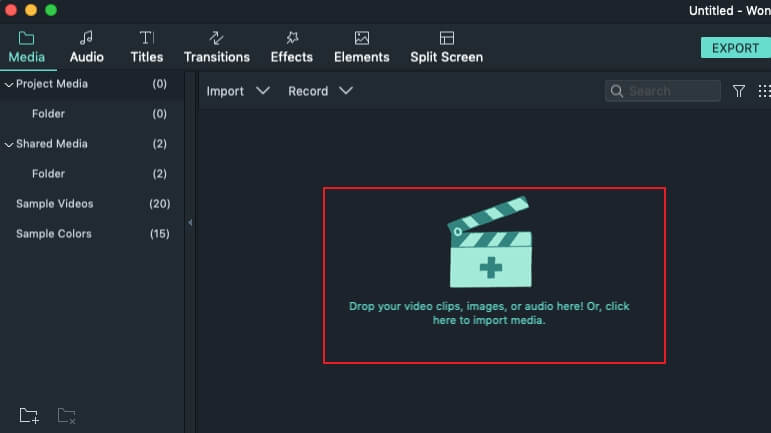If you are particularly looking for a handy and fun way to enliven your YouTube, Instagram, or TikTok videos with dynamic Face Replacement edits, you have ample freedom to do so, with the help of the Wondershare Filmora9 software and its in-built feature of Face-Off.
Take a cue from this step-by-step guide to learn how to use the Face-Off feature. You can also check out the video for a close-up tutorial on the same.
Introduce the Face-Off Feature in Wondershare Filmora9
The Face-Off tool mainly works with facial alignments of moving graphics, so you can use it not just on human faces but also on your pet’s face, or anything that looks like a face. Tucked under the Power Tools in the Filmora9 software, this particular feature is designed to take the Face Replacement technique to a whole new level by allowing the use of cutesy emojis to attach over the face of the subject. What's more, the face-changer feature also comes with an in-built motion-tracker mechanism, which automatically sensors the position of a moving face and adjusts the emoji accordingly. Therefore, you don’t need a frame by frame edit to capture each movement of the subject because a one-time edit is sufficient.

The concept of Face Replacement feature in videos arises from the need to withhold the identity of the subject in the video. The blurring effect is largely used in interviews, news features, etc. for this purpose. And the technique is generally counted under advanced level video editing skills. But in this age of YouTube, Instagram, and TikTok, there is an influx of dynamic content created by independent individuals, which capitalize on soft skills. And dynamic content demands dynamic editorial objects. So here goes the step-by-step process of how you can make this work on your own, without being a pro video editor.
How to Use Face-Off Effect in Wondershare Filmora9?
Step 1: Import Video File
To start the project on Filmora9, you first have to import the particular video onto the Filmora9 interface. To do so, you need to first open Filmora9 on your desktop.

It will open the timeline. And now you can either use the “File” button on the topmost toolbar, which opens up your drive folders, you have to find the right folder, and with a double click on your video project it will be imported; or, you may drag and drop your video with the simplest sweep of the mouse.
Step 2: Add Video Clip to Timeline
Once your video is imported in the Filmora9 interface, then you need to select the clip in the video where you wish to place the face-off edit. Again, use a simple drag and drop gesture to isolate the clip on the “timeline”. You can remove parts of the video by simply moving the cursor over the clip, to streamline on your subject.

Step 3: Activate the Face-Off Effect
With your video clip neatly placed on the timeline, you need to look out at the top left of the Filmora9 toolbar. There you will find the tab “Effects.” Then search “Utility” (you can manually scroll through the options, but the list is too long, so search-and-find is the easiest way out). Under Utility, you will find the Face-Off, along with a bunch of other effects.

Now, the final drill- simply hold the Face-Off block and drag it over the video clip. Once activated the feature will enable the Video Effects drawer
Step 4: Add Video Effects - Emojis and Objects
Double click on your clip to enlarge the drawer. Inside the drawer, you will find a host of emojis along with blur face effects. Select one as you wish, and your chosen emoji will be automatically placed on the moving face, as is detected by the Filmora9 software.
Once you are done with it, you can rerun the video preview. If you are satisfied, click OK, and your video copy will be saved in the Filmora archive. You may export or save the file as you wish.

Importance of Lighting & Focus
When working with the Face-Off effect, Light and Focus are really important to have on your clip. You need a high focus on your subject, for that it might not be fruitful to work with group videos. Another thing is light. If your video is too dark, then the effect might not be able to detect the face.


